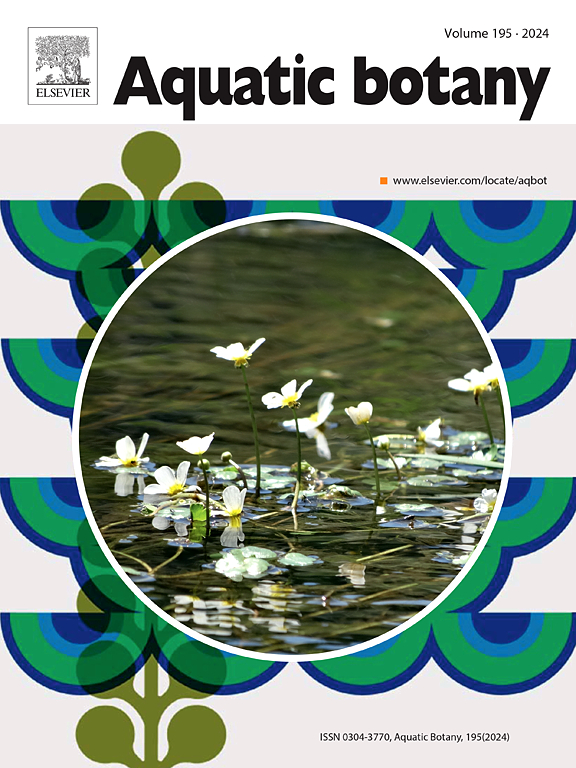Characterization of plant growth-promoting rhizobacteria associated with Posidonia oceanica meadow in the North coast of Monastir, Tunisia
IF 2.6
4区 生物学
Q2 MARINE & FRESHWATER BIOLOGY
引用次数: 0
Abstract
Given the significant ecological and socio-economic roles played by seagrass beds in the Mediterranean Sea, there is an urgent need to explore effective approaches for the conservation and restoration of Posidonia oceanica meadows. The characterization and utilization of plant growth-promoting rhizobacteria (PGPRs) appear to be one of the most innovative methods. In this study, metataxonomic analysis revealed the dominance of bacteria belonging to Acinetobacter (36.7 %), Halodesulfovibrio (38 %), Vibrio (9 %), Lactobacillus (1.3 %), Arcobacter (3 %), and Desulforhopalus (1 %) in the rhizosphere of P. oceanica, sampled from the northern coast of Monastir. Compared to the rhizosphere samples, a loss of biodiversity was observed in bulk sediment from adjacent erosive intermattes, with the disappearance of Halodesulfovibrio, Anaerovorax, Anaerotignum, and Marinomonas representatives, alongside a reduction in the abundance of Vibrio, Arcobacter, and Desulforhopalus. Isolation on Marine Agar medium allowed the purification of 42 bacterial strains, assigned to the genera Vibrio, Pseudoalteromonas, Alteromonas, Bermanella, Marinomonas, and Tritonibacter, with the detection of a new species closely related to V. viridaestus. The ability of these bacteria to produce hydrogen cyanide (HCN), ammonia (NH3), indole-3-acetic acid (IAA), and enzymes such as esterase, amylase, protease, agarase, and cellulase was also evaluated. The most promising strains for growth promotion were identified as Pseudoalteromonas shioyasakiensis PRL9 and PRL10, Alteromonas abrolhosensis PRA3, and Marinomonas aquiplantarum PR10. In vivo trials of the PGPR consortium on Posidonia seedling growth are planned.
突尼斯莫纳斯提尔北海岸海洋波西多尼亚草甸植物促生根瘤菌的特征
鉴于地中海海草床具有重要的生态和社会经济作用,迫切需要探索保护和恢复地中海波西多尼亚草甸的有效途径。促进植物生长的根瘤菌(PGPRs)的鉴定和利用是最具创新性的方法之一。在本研究中,元分类学分析显示,在莫纳斯特尔北部海岸取样的P. oceanica根际中,主要细菌属于不动杆菌(36.7 %)、Halodesulfovibrio(38 %)、弧菌(9 %)、乳酸杆菌(1.3 %)、Arcobacter(3 %)和Desulforhopalus(1 %)。与根际样品相比,在邻近侵蚀互质沉积物中观察到生物多样性的丧失,Halodesulfovibrio、Anaerovorax、Anaerotignum和Marinomonas的代表消失,同时Vibrio、Arcobacter和Desulforhopalus的丰度减少。在海洋琼脂培养基上分离得到42株细菌,分别属于弧菌属、假互生单胞菌属、互生单胞菌属、Bermanella属、Marinomonas属和tritonbacter属,并检测到一个与V. viridaestus密切相关的新种。这些细菌产生氰化氢(HCN)、氨(NH3)、吲哚-3-乙酸(IAA)以及酯酶、淀粉酶、蛋白酶、琼脂酶和纤维素酶等酶的能力也被评估。最具促生长潜力的菌株为盐asakakipseudoalteromonas PRL9和PRL10、abrolhosenalteromonas PRA3和aquplantarum Marinomonas PR10。PGPR联盟对波西多尼亚幼苗生长的体内试验正在计划中。
本文章由计算机程序翻译,如有差异,请以英文原文为准。
求助全文
约1分钟内获得全文
求助全文
来源期刊

Aquatic Botany
生物-海洋与淡水生物学
CiteScore
3.80
自引率
5.60%
发文量
70
审稿时长
6 months
期刊介绍:
Aquatic Botany offers a platform for papers relevant to a broad international readership on fundamental and applied aspects of marine and freshwater macroscopic plants in a context of ecology or environmental biology. This includes molecular, biochemical and physiological aspects of macroscopic aquatic plants as well as the classification, structure, function, dynamics and ecological interactions in plant-dominated aquatic communities and ecosystems. It is an outlet for papers dealing with research on the consequences of disturbance and stressors (e.g. environmental fluctuations and climate change, pollution, grazing and pathogens), use and management of aquatic plants (plant production and decomposition, commercial harvest, plant control) and the conservation of aquatic plant communities (breeding, transplantation and restoration). Specialized publications on certain rare taxa or papers on aquatic macroscopic plants from under-represented regions in the world can also find their place, subject to editor evaluation. Studies on fungi or microalgae will remain outside the scope of Aquatic Botany.
 求助内容:
求助内容: 应助结果提醒方式:
应助结果提醒方式:


